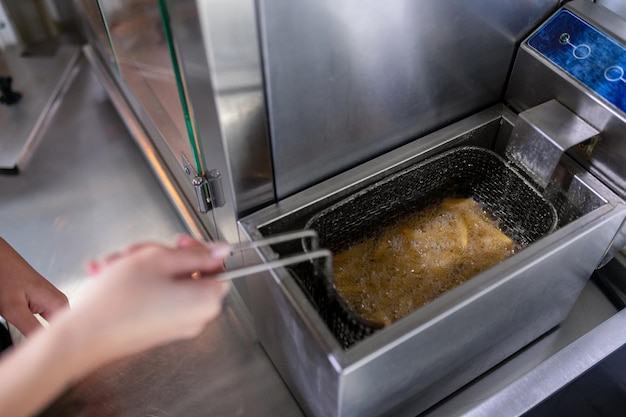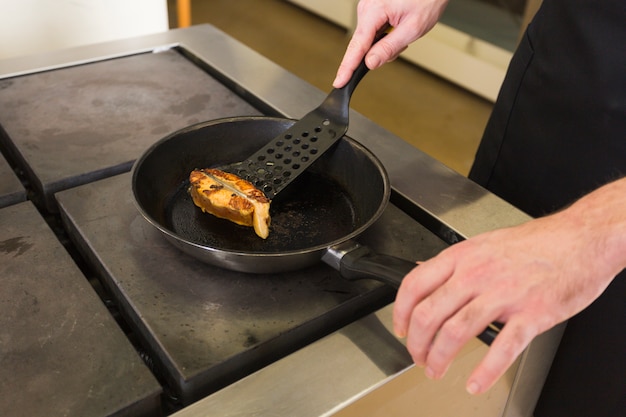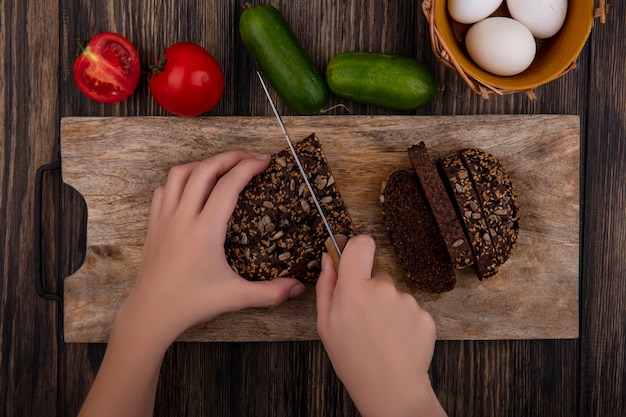Let's face it, sometimes you just crave a juicy, satisfying burger but don't have the time (or inclination) to whip up a gourmet masterpiece from scratch. That's where trusty frozen burgers come in – a convenient and delicious solution when you're craving a quick and easy meal. Now, I'll admit, there's something undeniably satisfying about grilling up a burger from scratch, but let's be honest, sometimes you just need a no-fuss approach. And with a little know-how, those frozen patties can be transformed into something truly delectable, I promise!
Over the years, I've been on a mission to find the best way to cook frozen burgers, and let me tell you, it's been a bit of a culinary adventure. From pan-frying to grilling, I've tried them all, but one method consistently reigns supreme: baking them in the oven. It's the magic trick that delivers the most flavorful, juicy, and consistently delicious burgers, every time.
This comprehensive guide will delve into everything you need to know about oven-baked frozen burgers, from selecting the perfect patty to achieving that golden-brown crust and juicy interior. We'll cover tips and tricks, common mistakes to avoid, and even share some mouthwatering recipe ideas. So, grab your oven mitts, preheat that oven, and get ready to experience the joy of oven-baked burgers like never before!
Part 1: Choosing the Right Frozen Burger

The Importance of Quality: It's All About Flavor
Listen, let's not beat around the bush. The quality of your frozen burger is crucial. You want a patty that's bursting with flavor, juicy, and not overly processed. You know what I'm talking about – those burgers that are packed with fillers, artificial flavors, and an abundance of salt just don't have the same depth of flavor as a good-quality patty.
Types of Frozen Burgers: Beyond Beef
The frozen burger aisle is bursting with options, each with its own unique characteristics:
- Beef Burgers: These are the classic choice, and they come in a variety of sizes and fat content. Aim for burgers with a higher fat content (around 80/20) for the most succulent and flavorful results. Remember, a bit of fat is your friend when it comes to juiciness!
- Turkey Burgers: A lighter and healthier alternative, turkey burgers are a good choice if you're watching your cholesterol. Just remember, they tend to be a bit leaner, so be careful not to overcook them.
- Chicken Burgers: If you're craving a more delicate and lighter flavor, chicken burgers are worth exploring. They can be a bit drier than beef or turkey, so keep those moistening techniques in mind (more on that later!).
- Vegetarian and Vegan Burgers: The world of plant-based burgers is booming, with incredible options ranging from veggie patties to soy-based burgers. Don't be afraid to experiment and try something new! You might be surprised at how delicious these meat-free alternatives can be.
Reading the Label: Unmasking the Burger
Before you toss that burger into your shopping cart, take a moment to read the label. Look for:
- Ingredients: Check for a short and simple list of ingredients, free of unfamiliar or overly processed additives. You want to see things like beef, pork, chicken, or vegetables, not a long list of chemicals and preservatives.
- Fat Content: Aim for a higher fat content (around 80/20) for the best flavor and juiciness.
- Sodium Content: Keep an eye on the sodium content, especially if you're watching your salt intake.
Part 2: Preparing for Baking

Thawing the Burgers: Patience Is Key
While some folks swear by baking frozen burgers straight from the freezer, I'm a firm believer in thawing them out first. It allows for more even cooking and prevents them from drying out, resulting in a much more satisfying burger.
Here are a few ways to thaw your burgers:
- Refrigerator: The safest and most hands-off method, taking about 4-6 hours. It's my personal favorite because it's slow and steady, ensuring even thawing.
- Cold Water: Submerge the burgers in a bowl of cold water for about 30 minutes. Remember to change the water every 15 minutes to keep it cold and prevent bacteria growth.
- Microwave: This is the fastest option, but it can be tricky to prevent overcooking. Use the defrost setting and check the burgers frequently to avoid uneven thawing.
Seasoning and Toppings: Unleash Your Creativity
Once your burgers are thawed, it's time to unleash your inner chef and add some flavor! There are endless possibilities when it comes to seasoning and toppings, but here are a few ideas to get your creative juices flowing:
- Classic: Salt, pepper, and a sprinkle of garlic powder are always a winning combination. They enhance the natural flavors of the meat and create a delicious base for your burger.
- Spicy: Add some heat with cayenne pepper, chili powder, or paprika for a fiery kick that will awaken your taste buds.
- Smokey: Use smoked paprika, smoked salt, or a dash of liquid smoke for a smoky depth of flavor that will transport you to a BBQ joint.
- Herbs: Fresh or dried herbs like rosemary, thyme, oregano, or parsley can add a vibrant aroma and enhance the flavors of your burger.
- Cheese: Add a slice of your favorite cheese to the top of the burger before baking. It melts and creates a delicious barrier, trapping moisture and enhancing the flavor.
- Bacon: Crumble some cooked bacon on top for extra flavor and a satisfying crunch. Bacon makes everything better, right?
Part 3: Baking the Burgers

Oven Temperature and Time: Finding the Sweet Spot
The key to perfectly baked burgers is finding the right combination of oven temperature and baking time. It's about creating that ideal balance of a crispy crust and a juicy interior.
Here's what I've found works best:
- Preheat your oven to 400°F (200°C). This ensures even cooking and helps the burgers cook through faster.
- Bake for 15-20 minutes. Start by checking the burgers after 15 minutes, and then check every few minutes after that. Use a meat thermometer to ensure they reach an internal temperature of 160°F (71°C).
Remember, the baking time may vary depending on the size and thickness of your burgers, so always use a meat thermometer to ensure they're cooked through.
Creating a Crust: That Golden-Brown Perfection
There's something undeniably satisfying about a crispy, golden-brown crust on a burger. It adds texture and visual appeal, and it's a sign that your burger has been cooked to perfection.
Here's how to achieve that coveted crust:
- Use a baking sheet with a rack: This allows air to circulate around the burgers, resulting in a more even crust.
- Avoid overcrowding the baking sheet: Leave some space between the burgers to prevent them from steaming and becoming soggy. Give them room to breathe!
- Flip the burgers halfway through: Flipping them over ensures both sides get a nice crust and that they cook evenly.
Monitoring the Doneness: The Art of Checking
The most important thing is to ensure your burgers are cooked to a safe internal temperature. Undercooked burgers are a no-no, and overcooked burgers can become dry and tough.
Here's how to tell if those burgers are done:
- Meat Thermometer: The most accurate way to check for doneness. Insert the thermometer into the thickest part of the burger, and make sure it reaches 160°F (71°C).
- Visual Clues: The burgers should be firm to the touch and have a golden-brown crust. They should also spring back when you press them gently.
- Don't overcook: Keep a close eye on them and remove them from the oven as soon as they reach the desired doneness. Overcooked burgers will be dry and tough, so don't let them go too long!
Part 4: Avoiding Common Mistakes
Overcrowding the Baking Sheet: A Recipe for Sogginess
One of the biggest mistakes people make is overcrowding the baking sheet. It's like trying to squeeze too many people onto a small boat – it just doesn't work. Overcrowding can lead to uneven cooking, resulting in soggy, steamed burgers. Leave plenty of space between the burgers, and if necessary, bake them in batches.
Not Preheating the Oven: A Crucial Step
Preheating your oven is a fundamental step in any baking process, and oven-baked burgers are no exception. It ensures the burgers cook evenly and reach the desired internal temperature. Don't be tempted to skip this crucial step.
Baking on a Cold Baking Sheet: A Surefire Way to Steam
Baking your burgers on a cold baking sheet is like starting a campfire with damp wood – it just won't work. The cold baking sheet will absorb heat from the burgers, slowing down the cooking process and leading to uneven cooking and a soggy burger. Make sure the baking sheet is heated up before you add the burgers.
Not Using a Meat Thermometer: Don't Rely on Visual Clues Alone
Don't rely on visual clues alone to determine doneness. A meat thermometer is your best friend when it comes to ensuring your burgers are cooked to a safe internal temperature. It's the only way to guarantee that they're safe to eat.
Part 5: Enhancing Your Burgers
Moistening Techniques: Keeping It Juicy
Here are a few tricks to keep those burgers juicy and flavorful:
- Top with Cheese: cheese melts and creates a barrier, trapping moisture inside the burger. It's a simple yet effective way to enhance juiciness and flavor.
- Use a Topper: Adding a slice of tomato or onion on top can help to prevent the burger from drying out. They act as a moisture barrier, keeping those precious juices locked in.
- Add a Little Liquid: Add a tablespoon or two of water or broth to the baking sheet before you add the burgers. This creates steam, helping to keep them moist and tender.
Adding Flavor: Taking It to the Next Level
Here are some ways to boost the flavor of your oven-baked burgers:
- Marinade: Marinating your burgers for a few hours before baking will infuse them with extra flavor. Use a marinade that complements the type of burger you're using. For beef, try a marinade with soy sauce, garlic, ginger, and a touch of honey. For chicken, try a marinade with lemon juice, herbs, and olive oil.
- Glaze: Brush a glaze made from bbq sauce, honey, or other flavorful ingredients onto the burgers during the last few minutes of baking. It adds a sweet and smoky touch to your burgers, giving them a restaurant-quality finish.
- Toppings: Let your imagination run wild! Try a mix of lettuce, tomato, onion, pickles, cheese, bacon, avocado, or your favorite sauce. There's no limit to what you can add.
Part 6: Recipe Ideas
Now for the fun part - the recipes! Here are a few ideas to get you started:
Classic Cheeseburger
Ingredients:
- 4 frozen beef burgers (80/20 fat content)
- Salt and pepper to taste
- 4 slices of cheese (your choice - cheddar, Swiss, Monterey Jack)
- 4 burger buns
- Lettuce, tomato, onion, pickles, and your favorite sauce (ketchup, mustard, mayo)
Instructions:
- Preheat your oven to 400°F (200°C).
- Season the burgers with salt and pepper.
- Place the burgers on a baking sheet lined with parchment paper.
- Bake for 15-20 minutes, or until the internal temperature reaches 160°F (71°C).
- Top with cheese and bake for an additional 2-3 minutes, or until the cheese is melted.
- Assemble your burgers on buns with your favorite toppings.
Spicy Chipotle Burger
Ingredients:
- 4 frozen turkey burgers
- 1 tablespoon of chili powder
- 1 teaspoon of smoked paprika
- 1/2 teaspoon of cayenne pepper
- 1/4 teaspoon of garlic powder
- Salt and pepper to taste
- 4 slices of Monterey Jack cheese
- 4 burger buns
- Guacamole, salsa, and sour cream (for toppings)
Instructions:
- Preheat your oven to 400°F (200°C).
- Combine the chili powder, smoked paprika, cayenne pepper, garlic powder, salt, and pepper in a small bowl.
- Rub the spice mixture onto the turkey burgers.
- Place the burgers on a baking sheet lined with parchment paper.
- Bake for 15-20 minutes, or until the internal temperature reaches 160°F (71°C).
- Top with cheese and bake for an additional 2-3 minutes, or until the cheese is melted.
- Assemble your burgers on buns with guacamole, salsa, and sour cream.
Mediterranean Veggie Burger
Ingredients:
- 4 frozen veggie burgers
- 1 tablespoon of olive oil
- 1/2 teaspoon of dried oregano
- 1/4 teaspoon of dried thyme
- Salt and pepper to taste
- 4 slices of feta cheese
- 4 burger buns
- Hummus, chopped tomatoes, red onion, and fresh spinach (for toppings)
Instructions:
- Preheat your oven to 400°F (200°C).
- Brush the veggie burgers with olive oil and sprinkle with oregano, thyme, salt, and pepper.
- Place the burgers on a baking sheet lined with parchment paper.
- Bake for 15-20 minutes, or until heated through.
- Top with feta cheese and bake for an additional 2-3 minutes, or until the cheese is melted.
- Assemble your burgers on buns with hummus, chopped tomatoes, red onion, and fresh spinach.
Part 7: Serving Suggestions
You've got those perfectly baked burgers. Now, what to serve them with? The possibilities are endless, but here are a few ideas to get your creative juices flowing:
- burger bar: Set up a burger bar with all the fixings, like lettuce, tomato, onion, pickles, cheese, bacon, and your favorite sauces. Let everyone create their own burger masterpiece!
- side dishes: Serve your burgers with classic sides like potato chips, fries, coleslaw, potato salad, or a green salad.
- Drinks: Pair your burgers with a cold beer, a refreshing lemonade, or a glass of iced tea.
Part 8: FAQs
1. Can I bake frozen burgers from frozen?
While it's technically possible, I recommend thawing your burgers first for the best results. Thawing allows for more even cooking and helps prevent the burgers from drying out. It's worth the extra time for a juicier and more flavorful burger.
2. How long should I bake frozen burgers?
The baking time will vary depending on the size and thickness of your burgers. As a general rule, bake frozen burgers for 15-20 minutes at 400°F (200°C). Always use a meat thermometer to ensure they reach an internal temperature of 160°F (71°C).
3. What if my burgers are too dry?
If your burgers are too dry, try one of the moistening techniques mentioned earlier: top them with cheese, add a little water or broth to the baking sheet, or use a burger with a higher fat content.
4. How can I make my burgers more flavorful?
There are many ways to enhance the flavor of your burgers! You can marinade them, glaze them with a flavorful sauce, or add spices and herbs to the meat. Get creative with your toppings – the possibilities are endless!
5. Can I bake frozen burgers in a toaster oven?
Yes, you can bake frozen burgers in a toaster oven, but you may need to adjust the baking time and temperature depending on your model. Check your toaster oven's manual for specific instructions.
Part 9: Conclusion
So there you have it – your complete guide to oven-baked frozen burgers! It's a simple, delicious, and convenient way to enjoy a tasty burger any night of the week. Remember, don't be afraid to experiment with different types of burgers, seasonings, and toppings. There's no wrong way to enjoy a burger, as long as it's cooked to perfection! Now go forth and conquer the world of oven-baked burgers! Happy eating!
Everyone is watching

Prime Rib Roast Cooking Time Chart: Per Pound Guide
Cooking TipsPrime rib roast. Just the name conjures images of lavish dinners, crackling fires, and hearty laughter. It’s ...

How Long to Bake Potatoes in the Oven (Perfect Every Time)
Cooking TipsBaked potatoes are a staple in my kitchen. They're incredibly versatile, delicious, and surprisingly easy to m...

Perfect Rice Every Time: The Ultimate Guide to Cooking Rice
Cooking TipsAs a self-proclaimed foodie, I've always been a bit obsessed with rice. It's the foundation of countless cuisi...

The Ultimate Guide to Cooking Asparagus: Tips, Techniques, and Recipes
Cooking TipsAsparagus. The mere mention of this spring delicacy conjures up images of vibrant green spears, crisp and burs...

Ultimate Guide to Cooking the Perfect Thanksgiving Turkey
Cooking TipsThanksgiving. Just the word conjures up images of overflowing tables laden with delicious food, the scent of r...
